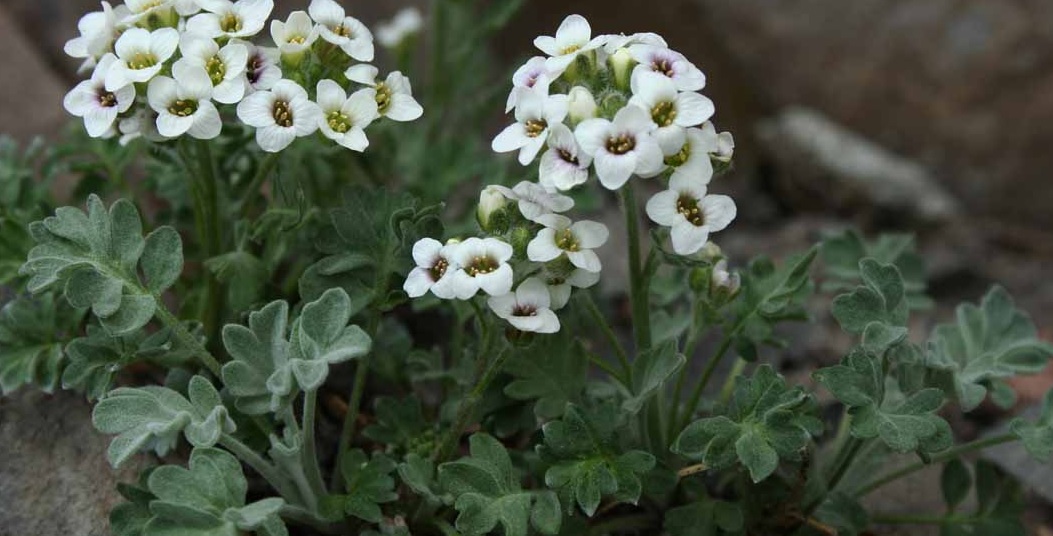Candytuft
(Smelowskia)

Description
Plants-cespitose, caudex well-developed, thick, often-branched, covered with persistent petiolar remains; not scapose; usually pubescent.-Stems-erect to decumbent, unbranched or branched distally, densely pubescent.-Leaves-basal and cauline; petiolate or sessile; basal rosulate, petiolate, blade margins usually 1- or 2-pinnatisect, rarely entire.-Racemes-(corymbose, several-flowered), often considerably elongated in fruit.-Fruiting pedicels-ascending, spreading, suberect, or divaricate [recurved], slender.-Flowers: sepals (sometimes persistent), oblong [ovate]; petals spatulate to obovate or suborbicular, (longer than sepals), claw differentiated from blade, (apex rounded); stamens slightly tetradynamous; filaments often dilated basally; anthers ovate or oblong, (apex obtuse); nectar glands usually confluent, subtending bases of stamens, median glands present or not.-Fruits-siliques or silicles, usually sessile, rarely shortly stipitate, linear, oblong, obovoid, ellipsoid, spatulate, oblanceolate, suboblong, or pyriform [fusiform, ovoid, suborbicular], smooth, 4-angled, angustiseptate, terete, or subterete [latiseptate]; valves each with prominent or obscure midvein, usually glabrous; replum rounded; septum complete or perforated; ovules 4-18 per ovary; stigma capitate.-Seeds-plump, not winged, usually oblong, rarely oblong-lanceolate; seed coat (minutely reticulate), not mucilaginous when wetted; cotyledons incumbent or accumbent.
Taxonomic tree:







